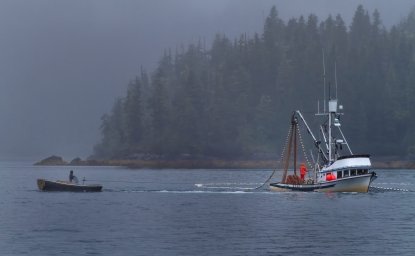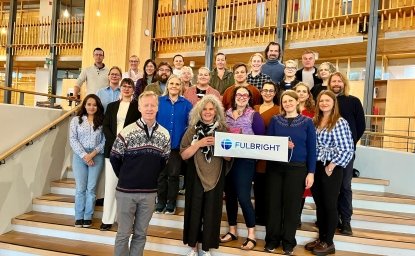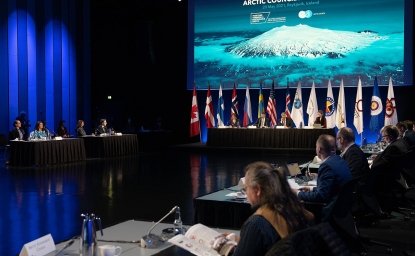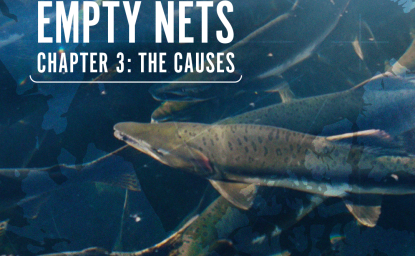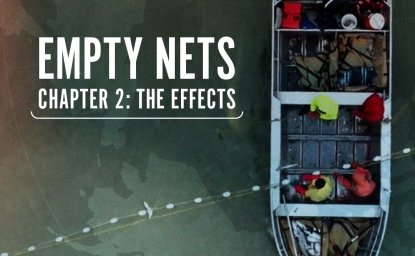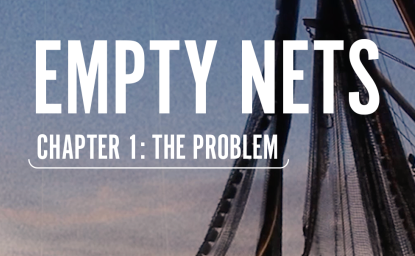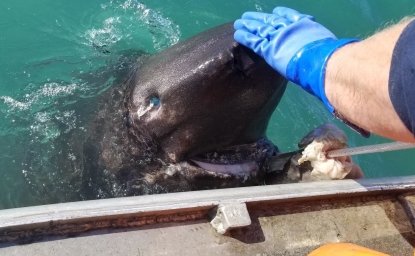We are salmon people. In the Yup’ik language, which is a big part of our river, the word for food is “neqa”, which is also the word for salmon. It’s the same thing.
This is how we learn to be part of a contributing society and family. Everybody has a job. That job grows with age and experience. Everybody has a place.
The waters off the coast of Alaska are one of the most abundant sources of natural food the world has ever seen. For thousands of years, they’ve sustained the peoples of the region. And for the past several decades, they’ve reliably fed Americans, their pets, and their soil.
But recently, there’s been an alarming shift for many of the species in this great American fishery. As the stocks dwindle away, the effects of their disappearance are felt throughout Alaska and the greater United States.
Folks that are coming up to Alaska on their once-in-a-lifetime trip looking for that big King salmon, you know the prize, and then they get here and they realize that it’s not happening. I think probably the main issue is the fish. Where are they?
Alaska fisheries are some of the biggest in the world by volume and value. It’s causing food insecurity, a social crisis, a cultural crisis, and then it’s stacking up all these political tensions throughout the systems that are put into place to manage for a healthy, sustainable fish population.
There are communities in this state- rural communities- that that’s their entire livelihood. That’s part of the Alaska way of life.
People didn’t have enough food to feed their dog teams. There are stories all over Alaska, particularly during the pandemic, of people having to shoot their dog teams because they didn’t have any food for them.
They just finished the fur seal conservation plan and they’re starving. And so, the decline in pups is because they’re having to forage further, and so it affects much more than just what we tend to focus on in commercial fisheries.
It’s not just the salmon declines, it’s also the bears that eat the salmon. And then the bears have to eat something else when they can’t get the salmon, so the trickle down in the interior when you have a salmon decline, it’s not just subsistence and interior users that aren’t getting salmon, neither is the rest of the ecosystem. And they’re preying upon moose, or the bears are eating something different.
People are only allowed to fish in timed windows. You get an opportunity for, say, 12 hours. How do we get our kids ready and know how to do this in 12-hour windows? You can’t teach someone to be a provider from nine to nine three times a summer.
The effects are already devastating. But the forecast is even worse.
The past couple years, we’ve had an ex-vessel value from Alaskan fisheries of about 5.6 to 5.9 billion dollars. Now that has actually decreased over the last year. They dropped by 1.8 billion dollars.
We’re seeing a political boiling point in Alaska right now where things are going to be changing because people’s lives have been impacted so significantly.
I think history has shown that if we cross certain thresholds, we can’t help recover or rebuild a species or a stock. The longer we wait to take action on certain issues, we will unknowingly cross some thresholds that a way of life may be lost for a community.
When you look down at commercial fisheries, we’re talking about an entire community centered around catching fish, and when that goes away, that’s not just one job right there, it’s a whole set of jobs. It’s a trickle-down effect, right? It goes to the processor. from the processor, it bleeds out in the community to all the support businesses. The extrapolation of jobs is huge from just that one boat not able to go out.
If you can’t catch them, or they’re not there to catch, the trickle-down is going to be felt everywhere.
The causes of these shifting numbers are far from simple. There’s a whole bunch of reasons and I don’t think there’s any one.
It’s very hard to find people that haven’t experienced some sort of effect of climate-driven change.
An international issue is, of course, the release of hatchery salmon from Japan, Russia, and other nations. And so you have this massive abundance of salmon competing with wild Alaskan stocks.
The hatchery numbers have grown over the last couple of decades from all the countries. Russia sells a lot of those fish, so it’s less food security and more profit. And if it doesn’t do damage to them, why not release?
We have the tools to combat this crisis.
Indigenous people have been co-managing the world since time immemorial, right? Our relationship with our fish is dependent on our relationship with the land, our relationship with the waters, and we’ve done it together.
The bridging of Indigenous knowledge and Western science is really important. In adaptation in particular, in understanding how to respond to climate change. Not doing that can result in responses that can make climate impacts even worse.
We’re catching more target fish and less bycatch and part of it is spending a lot more money in avoidance, taking those tolerances where maybe they used to leave an area for ten fish or seven fish and now they’re leaving for three fish or four fish.
We are investing in some pretty exciting technology that allows us to bring together information from multiple knowledge sources as well as the newest computing capacity to improve predictions.
There needs to be legislation to back that up because history has shown that if it’s not mandated, you just don’t see the same kind of behavioral changes from the fleet.
One thing I’ve advocated for with regard to disasters is more flexibility in disaster spending. So you’re not just spending to get everyone back to the way they were before the disaster, but we’re actually spending to avoid future disasters.
If we want to maintain the future where we have the most options for adaptation, where we have the lowest cost to adapting to climate-driven shocks, we are in the decade where we need to curb emissions.
It’s a big money fishery but it’s also a big volume fishery, so what the US industry is looking to do is really raise the awareness of the value of US domestic fisheries because they are sustainably managed and processed within the US so that the money essentially stays here.
We'd like to see our congresspeople talk about treaties with the countries that we are friendly with. We have treaties with Canada for salmon and halibut. There's a halibut commission where talks are made and quotas are done.
Focusing on the things that are economically viable, things that improve livelihood, solutions that meet multiple objectives but are also good for the climate, those are the ones that are going to work.
We know what we can do now. It’s not experimental. There are economic plans that have been laid out, there are development plans that have been laid out. The solutions are there, we just need to implement them.
The type of research we need is baseline, truly, to understand what the problem is. What the problems are.
To have a sense of what the ocean is doing, for how a certain fish species is doing on a given year or over a five-to-ten-year time period, we really need to go out and collect basic data on that species at least every year.
One of the biggest assets we have in terms of science is being able to see these early warnings, so maintaining our surveys, maintaining the ability to observe anomalies as they occur, much like with hurricane forecasting, right, being able to see how that storm is evolving, we need that same on the ground ability to see things coming. These predictive tools give us a lot of ability to see around the bend and that's really important.
We're starting to lose survey data because we're losing funding. We need those surveys because we need to be able to keep tracking and keep monitoring so that we can gain that understanding of what might be occurring.
These great American fisheries can be saved, but it will take decisive action. The time for that action is now because tomorrow might be too late.
We're on a trajectory of a world without fish. If we get there, then everybody loses.


